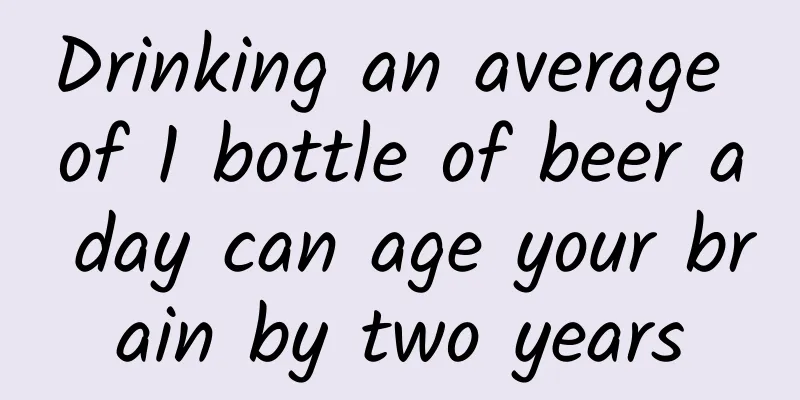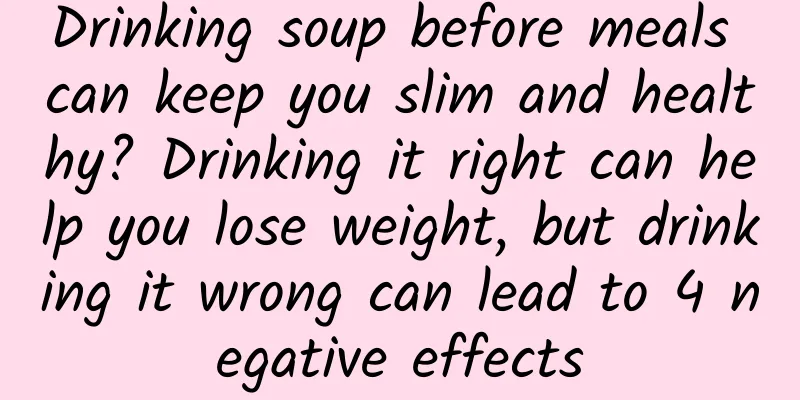Drinking an average of 1 bottle of beer a day can age your brain by two years

|
A little drinking can make you happy, but excessive drinking can harm your body. This has been the view of most people on drinking since ancient times. It's not just in everyday life that some people advocate the benefits of moderate drinking for the human body. Past studies have also shown that drinking small amounts of alcohol may be beneficial to the brains of older people. However, a research paper published in a Nature journal on March 4, 2022 completely denied the view that a little drinking can help you relax. Whether it is a little drinking or alcoholism, the damage to the brain cannot be ignored. Researchers from the University of Pennsylvania and the University of Wisconsin-Madison published a research paper in Nature Communications, a subsidiary of Nature, titled "Associations between alcohol consumption and gray and white matter volumes in the UK Biobank", which showed that drinking is associated with reduced brain volume. Even light to moderate drinking can cause damage to the brain. Drinking an average of one bottle of beer a day can cause damage to the brain equivalent to two years of aging. Screenshot of the paper The results emerged after the research team carefully analyzed data from more than 36,000 adults in the UK Biobank. In order to study the effects of alcohol consumption on the brain, researchers need a more objective measure of alcohol consumption. Because there are many types of alcohol and the alcohol content varies, "alcohol units" are usually used as a measure, with 1 alcohol unit corresponding to 10 ml of pure alcohol. For example, a glass of beer, 500 ml, with an alcohol content of 5%, corresponds to 2.5 alcohol units. A glass of 50 ml of 50° liquor also corresponds to 2.5 alcohol units. At the same time, because it involves the analysis of brain volume, the research team not only controlled the subjects' height, age, gender, smoking level, genetic ancestry, place of residence, socioeconomic status, etc., but also corrected the brain volume data for the subjects' overall head size. In order to accurately calculate the volume of gray matter and white matter in different areas of the brain, the researchers specifically observed the brain magnetic resonance imaging data of the subjects. The research team asked volunteers ranging from no drinkers to those who drank an average of 4 or more units of alcohol per day. The results showed that drinking causes a reduction in gray and white matter in the brain, and that the effect is exponential, rather than a linear, controllable, and slowly accumulating growth. That is to say, the effect of 0 to 1 unit of alcohol on brain volume may be imperceptible, but once the alcohol intake is increased a little bit, such as taking an extra sip of alcohol, brain volume will be affected much more greatly. The two bar graphs on the left and right show the changes in gray matter and white matter for males, females and the overall volunteers. The left graph is gray matter, and the right graph is white matter. The "F" in the legend corresponds to females, "M" is males, and "A" represents all respondents. The vertical axis represents the average residue, which refers to the average remaining brain volume, and the horizontal axis represents the units of alcohol intake. It can be clearly seen that the brain volume damage changes exponentially with the increase in the units of alcohol intake. To further understand the impact of this change, the researchers compared the reduction in brain volume caused by drinking with the reduction in brain volume caused by aging. The results showed that the effects of drinking corresponded to the effects of brain aging, and the more alcohol people drank, the stronger the connection became. Specifically, if the average drinking volume increases from 1 unit of alcohol per day to 2 units of alcohol, that is, roughly from drinking half a bottle of beer a day to drinking a bottle of beer a day, it is equivalent to the brain aging by 2 years. If the average daily alcohol intake increases from 2 units to 3 units, it is equivalent to 3.5 years of brain aging. If compared with non-drinkers, people who drink an average of 4 units of alcohol per day have a brain aging of more than 10 years. It seems that even moderate drinking, which is generally considered, can cause great harm to the brain. One sip of liquor a day can also cause damage to the brain. And some people who choose to drink a lot on their days off may suffer more damage than those who drink every day. Excessive drinking once can cause quite serious damage to the brain. Although the National Institute on Alcohol Abuse and Alcoholism recommends that women drink no more than 1 unit of alcohol per day and men drink no more than 2 units of alcohol per day, this standard has far exceeded the amount of alcohol that can harm the brain. Once the amount of alcohol consumed exceeds this amount, the consequences are very serious. According to the National Institute on Alcohol Abuse and Alcoholism, nearly 88,000 Americans die each year from alcohol-related causes, accounting for about one-third of all deaths in the United States each year, making it the third leading preventable cause of death in the U.S. Excessive drinking also increases the risk of other diseases, including several types of cancer, such as oral cancer, colon cancer, rectal cancer, stomach cancer and esophageal cancer. "The only way to relieve worries is to drink Du Kang." Worries will disappear with the passing of time, but the damage to the brain caused by alcohol will not go away with the wind. END Reviewer: Yin Tielun, associate chief physician of the Department of Neurology, Airport Campus, Peking University Third Hospital. Tadpole Musical Notation original article, please indicate the source when reprinting Editor/Xiao Xitushuo |
<<: "Simple" unsolved mathematical mysteries
>>: When the river meets the ocean: an amazing estuary adventure
Recommend
A collection of APP and WeChat public account development and management tools
Tools for mobile app entrepreneurs (Part 1) As a ...
How to do a good job in sanitation and epidemic prevention in flood-stricken areas? Experts will show you how to deal with the environment and disinfection guidelines
In recent days, extreme rainfall has occurred in ...
Taking P2P as an example, how to build a member growth incentive system from scratch?
I have been engaged in Internet product fields fo...
Summer vacation is not over yet, and the child's hyperopia reserve is gone? !
The summer vacation is long and the weather is ho...
Will Antarctica be habitable in the future?
Antarctica's ecology is already changing as g...
Is it good or bad for programmers to encounter such a leader during code review?
Today, when I was browsing the website, I saw a p...
5 strategies for social media marketing!
Introduction: There is a vast world for social tr...
How can Alibaba's Double 11, which makes you confused, hit 150 billion yuan?
In 2009, Tmall (then known as Taobao Mall) began ...
7 Ways to Use Mobile Game Analytics Data Properly
Knowledge is power, which is especially important...
"Tiktok Operation Basics Systematic Course" The perfect transformation from a Tiktok rookie to a big shot
Tiktok practical advanced course, experience the ...
How to write a good advertising case analysis? Three simple steps to tell you
During the holidays, a reader asked me a question...
Why Are Your Facebook Ads Burning Money So Fast?
When you run Facebook ads , one of the most impor...
The former product operations director of Maopu.com talks about ten insights on new media operations
I should be considered as one of the first new me...
K12 education promotion cases & crowd targeting strategies!
How to improve the quality of Internet users’ acc...
Don’t have too high expectations for community operations! Correct some operational misunderstandings!
I've been a bit busy with work recently and h...









![Friends who have high private WeChat visits to Chengdu Tea Tasting are recommending [worth collecting]](/upload/images/67cc0edfd5888.webp)